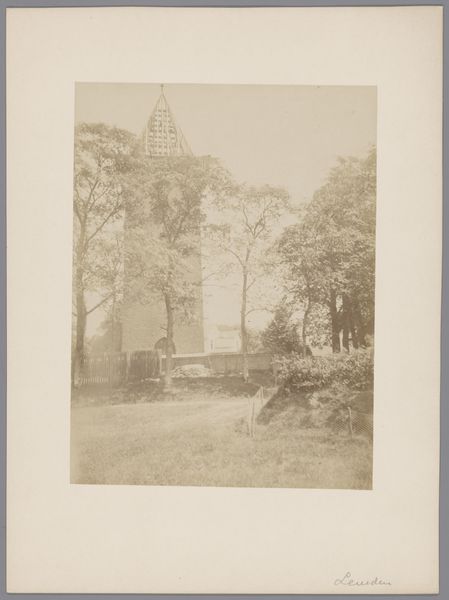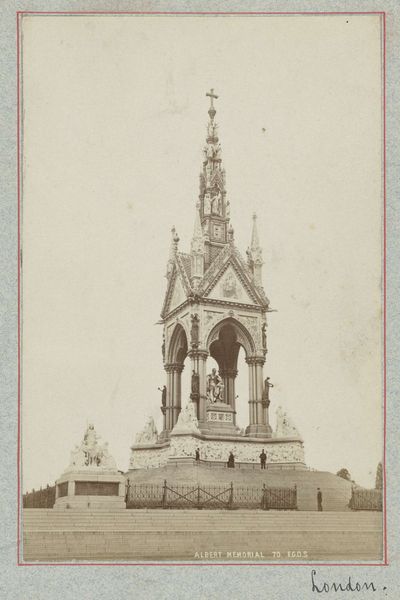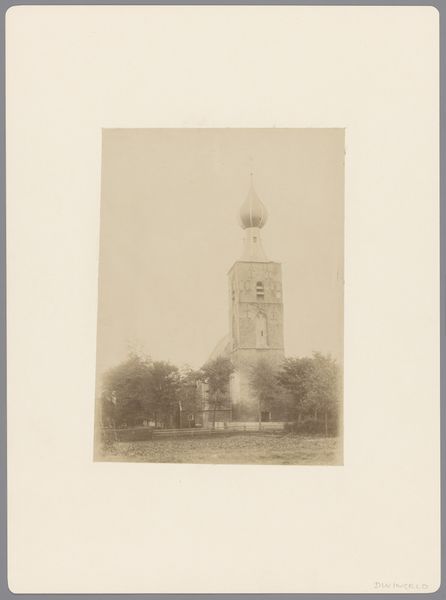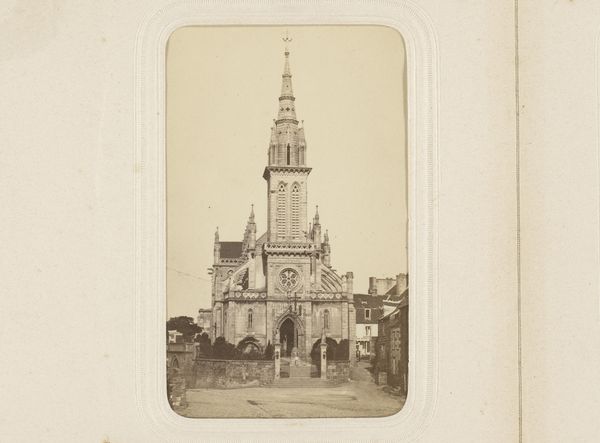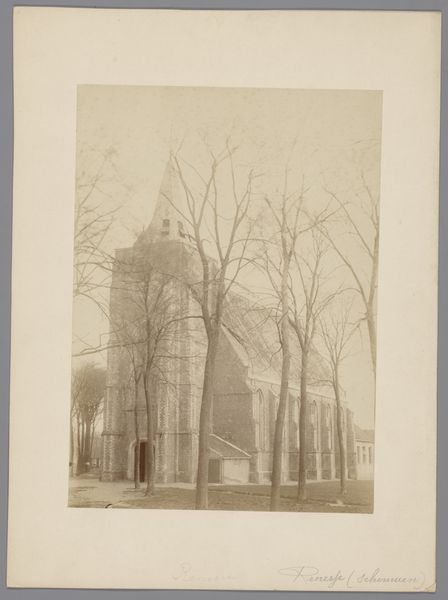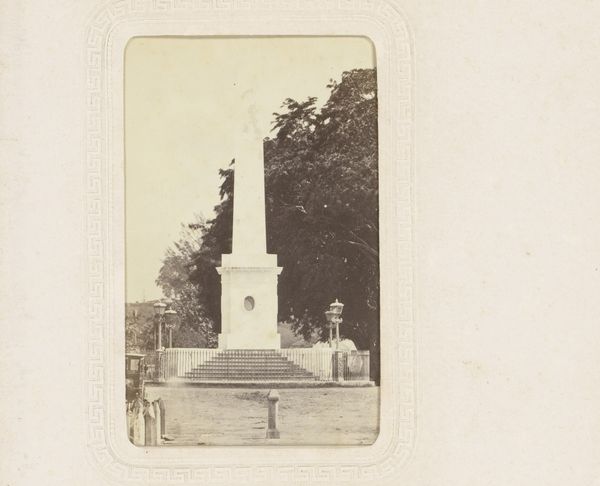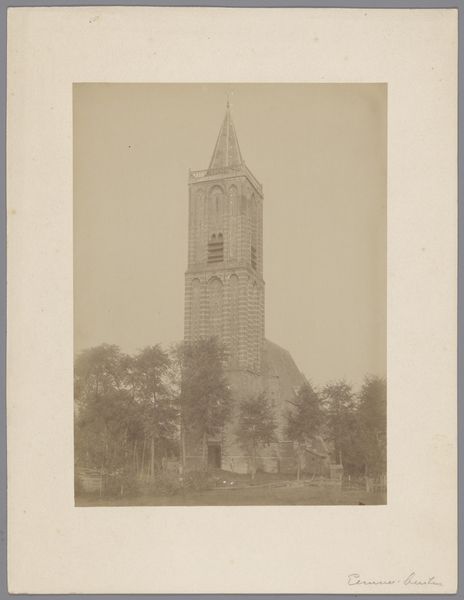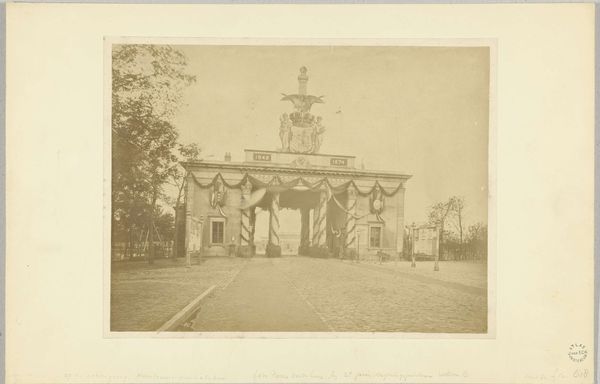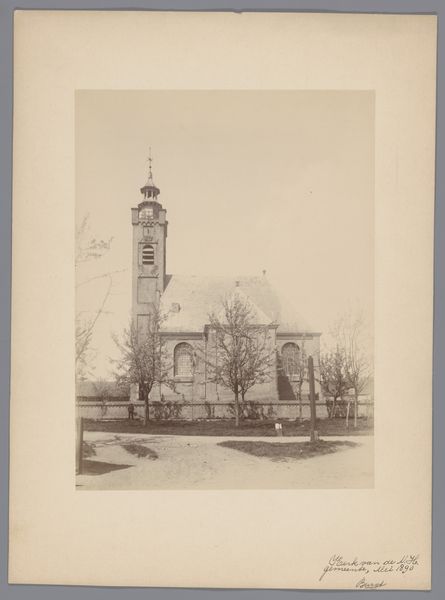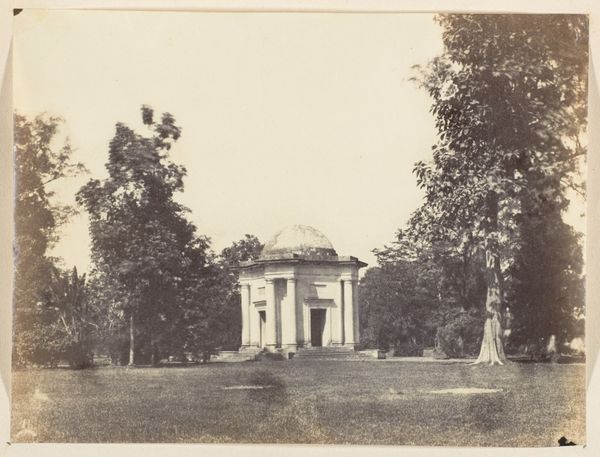
Monument voor de Nationale Onafhankelijkheid op Plein 1813 in Den Haag c. 1901s
0:00
0:00
photography
#
statue
#
landscape
#
photography
#
cityscape
Dimensions: height 110 mm, width 81 mm
Copyright: Rijks Museum: Open Domain
Editor: This is a photograph, probably from around the 1900s, depicting the "Monument voor de Nationale Onafhankelijkheid op Plein 1813 in Den Haag." It's a bit faded, giving it a distant, almost dreamlike quality. What can you tell me about it? Curator: Well, let’s think about the photograph itself. It is, in its own right, an object made through specific industrial processes in early photography. The monument, a massive construction presumably made of stone and bronze, is rendered here in a relatively mass-producible format. Does the act of photographing something monumental change our relationship to its implied power? Editor: That's an interesting point. I hadn’t thought about the photo as an object, changing the monument. Curator: Consider the monument's purpose versus the photograph’s. One seeks to cement an official, national narrative using expensive materials and skilled labor. The photograph, however, potentially democratizes access, creating a market. We must then consider whose hands are involved at each stage—quarry workers, bronze casters, photographers, printers, vendors. How do these processes differ, and who profits from them? Editor: I see what you mean. Thinking about the photograph's materiality also changes things. The original photograph could be widely distributed as postcards. Curator: Precisely. This image's consumption connects directly with broader political, social and economic frameworks. This object embodies a tiny slice of the burgeoning tourist industry! It’s all about materiality and context, don't you think? Editor: Definitely! I hadn’t thought about this photo within these wider contexts, about its mass production changing the relationship between the people and the monument, or as a potential capitalist tool through tourism. I see a lot more than I did at first.
Comments
No comments
Be the first to comment and join the conversation on the ultimate creative platform.
